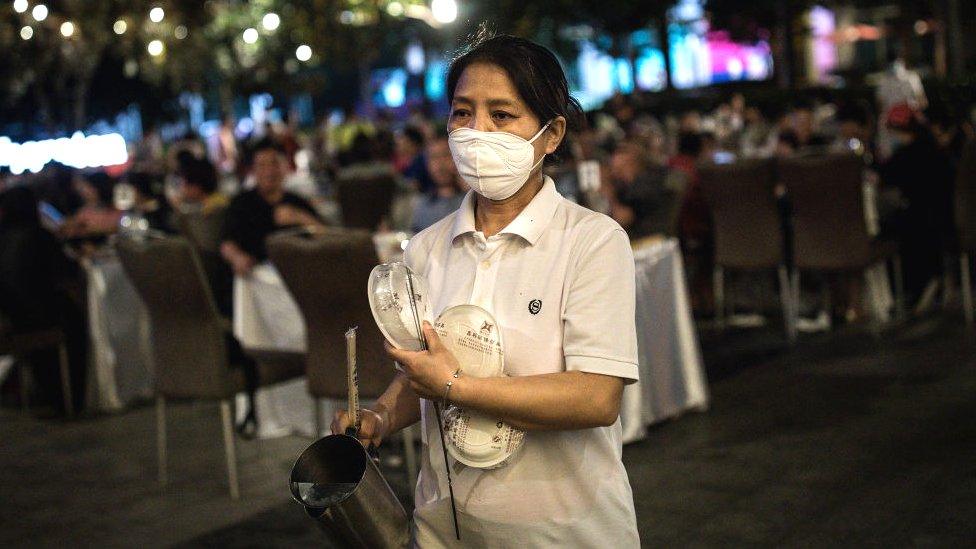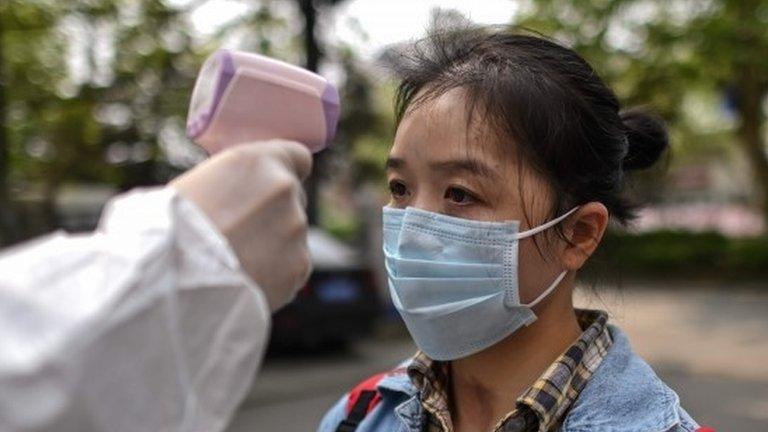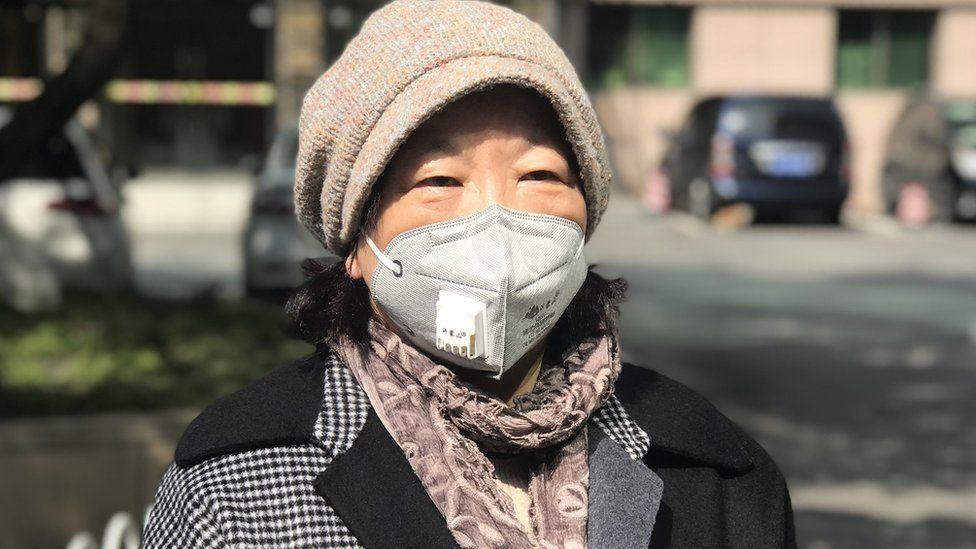China Covid-19: Nearly 500,000 in Wuhan may have had virus, says study
- Published

The study suggests that almost 5% of Wuhan's population might have been infected
Almost 5% of the people in the Chinese city of Wuhan may have been infected with Covid-19, a study by researchers at the Chinese Centre for Disease Control and Prevention has shown.
Wuhan's population is estimated at 11 million, which suggests that almost 500,000 people may have had the virus.
If true, that is almost 10 times higher than Wuhan's officially recorded number of 50,354 cases.
Asymptomatic cases are not counted in China's official case tally.
The study, carried out early this year, took samples from 34,000 people in Wuhan, as well the broader Hubei province, Beijing, Shanghai and four other provinces, said China's CDC in a statement on WeChat.
Researchers found an antibody prevalence rate of 4.43% in Wuhan, and a prevalence rate of 0.44% in the broader Hubei province.
The study comes ahead of a visit by a team of international scientists to Wuhan to investigate the origins of the virus. They will visit next month, following months of negotiations with Beijing, who had been reluctant to agree to an independent inquiry.
China had earlier this year been accused of a lack of transparency over its virus figures, with critics casting doubt on the extent to which their numbers could be trusted.
The CDC statement added that only two people tested positive for the antibody among the 12,000 people tested outside Hubei.
The study was conducted one month after China "contained the first wave" of the pandemic
It concluded that the number of people infected outside Wuhan was low, saying that this suggested measures taken in Wuhan had prevented the virus from spreading on a larger scale.
Earlier this year, the virus was traced to a so-called "wet market" in Wuhan, and it was suggested that this was where it made the leap from animals to humans.
But experts now believe it may simply have been amplified there.
From fear to freedom: China's painful year fighting Covid-19
Related topics
- Published7 April 2020

- Published29 December 2020

- Published28 December 2020
